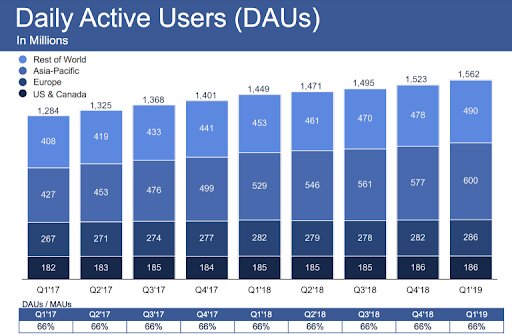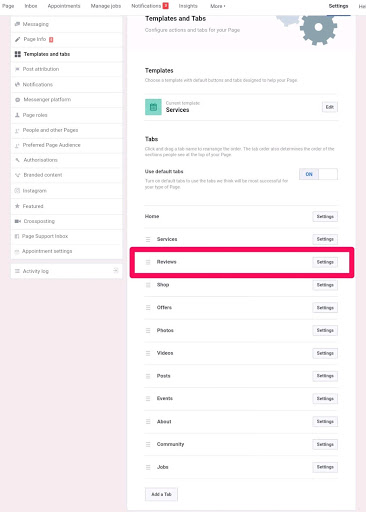7 PRACTICAL WAYS TO OPTIMIZE YOUR FACEBOOK PAGE

In the quest for digital marketing, Facebook is getting too large to be ignored. Facebook has a large audience of about 2.38 billion monthly users (according to reports for Q4 2018 when it grew 2.2 percent). This makes it a perfect platform to market your products and services, even so, to its promising audience of about 1.56 billion daily active users (DAUs).
In recent times, Facebook has been recording a whopping increase in daily traffic. This presents a whole lot of potential for business owners and brands who want to maximize the many opportunities for Facebook presence.

The key is to first optimize your Facebook business page so that your marketing efforts can stand out from the crowd and yield you the greatest return on investment. Below are tips that will be helpful if you already own a Facebook business account and would like to get the most out of it.
TIP #1: MAKE A GOOD IMPRESSION WITH YOUR PAGE PROFILE PICTURE
This is a no-brainer but most people still get it wrong. Your profile picture should be a high-resolution image that shows your face clearly or that reflects your brand. You can upload either your business logo or a personal photo that is clear, professional, and high-quality. Your profile picture is very important because it will be displayed on Facebook search results, on all your posts, and on users' timelines when they share your post.
The recommended size for a Facebook page profile picture is 360 x 360 pixels, with a minimum size of at least 180 x 180 pixels which should still be readable at 40 pixels when displayed in a newsfeed.
TIP #2: MAKE YOUR COVER PHOTO COUNT
The Facebook cover photo is the large panoramic image space at the top of your Facebook page timeline. It is sometimes called the header photo or banner image. Your Facebook page cover photo is much bigger than your profile picture. And yes, it’s another way to catch people’s attention and make a great impression.

Since the Facebook page profile picture is usually displayed along with the cover photo, it is not recommended to upload the exact same picture for both of those elements. Basically, treat your page profile picture as your logo, while for the cover photo, you can post eye-catching pictures of your products and services which should be changed at intervals (maybe every month or quarter) to reflect the latest events, trends, and news in your business.
The recommendation for the cover photo is to use an image that is at least 820 pixels wide by 360 pixels tall. However, if you want higher quality, use an image that’s at least 1640 pixels by 720 pixels. For mobile users, it is 563 by 133 pixels. Before now, Facebook only allowed you to upload just one photo as your static cover photo. But it recently added the ability to upload slideshows, where you can select up to 5 photos that rotate. Better yet, you can use a 20-90 seconds video as your cover photo to showcase what you’ve got. The perfect size is 820 by 462 pixels.
Like a video on Facebook and want to add it as your cover photo but don't know how to download Facebook videos. Take assistance from the Facebook video downloader online by Smallseotools.com and Enjoy!
TIP #3: REVAMP YOUR FACEBOOK ABOUT SECTION
Below the cover photo of your Facebook business page is an area called the "About" section. This area is provided for you to share some basic information about your business, including your contact details, website address, location, hours of opening and a description of your business.

This basically includes the Short Description and Long Descriptions. The Short Description allows you to talk about who you are and what you do in a limited number of characters, while the Long Description allows you to share as much information as you need to describe your business. Customize your Facebook About section to accurately communicate your business story. If you do a proper introduction to your potential customers, they’re more likely to connect with you and patronize you. Briefly, include basic information like what and where your business is.
Garnish this space with relevant keywords. Why? Because the keywords in your Facebook business page's About section can be picked up by both the Facebook search algorithm as well as by other search engines like Google to help your page show up on search results.
Things to consider adding to your page About section could be:
-
Your startup story: You can explain your motivation for starting your business and state the difference between you and your competitors.
-
Links to other social media networks: Make it easier for people to connect with you by giving them a variety of options to choose from.
-
Your contact information: Leave a suitable avenue for potential customers to reach you. Be it your phone number or email, don’t make your potential customers work too hard to contact you.
-
Products or services you provide: Specify what your products and services are. You can add links to your products and services leading to your website.
Talking about links, you can easily add a link to your website directly on your Facebook page by simply scrolling down in the About section to the Additional Contact details section. There’s a text that says to enter a website. Enter yours and save. Add a link in your website back to your Facebook page to make navigation easier. Also, if you enter a web address that contains https:// in the About field on the Basic Information page, it will be hyperlinked. Ensure that you type it in full so that people go to the correct page when they click the address.
TIP #4: CHOOSE YOUR BUSINESS CATEGORY CORRECTLY
It is important to get your category right the first time. This helps your potential customers discover your business page more easily. It also helps your page to easily get found in Google and other search engines. But the good news is that if you’ve chosen the wrong category you always can make changes later.
Facebook provides several different category types to choose from including:
-
Local Businesses: This is ideal for businesses that have a physical location and would want customers to patronize them from the local setting.
-
Companies and Organizations: This category is ideal for all sorts of companies and organizations. It is also ideal for schools, non-governmental organizations, community groups, agencies, etc.
-
Brands or Products: If your products and services are purchased through several websites or several retailers, then this may be a good option.
-
Websites and Blogs: Particularly ideal for blogs or websites of all types.

Other categories are Books and Magazines, Events sources, Films, Music, People, Sports, Television, etc. Once you select a category, you'll have the chance to hone it down to a subcategory where you can be more specific in your selection. For example, if you choose the "Websites & Blogs" category, you'll be able to select whether it is a personal blog, an eCommerce website, a government website, a travel blog, and so on.

TIP #5: CREATE A CUSTOM URL
When you open a new Facebook page, Facebook automatically creates a long URL for you, which is not very useful and practical if you want to promote your page with it. Hence the need to get one that reflects your business and is short and customer-friendly. Your Facebook Page URL is part of your web address after the https://www.facebook.com/. So in the case of Small SEO Tools' Facebook page, we’re looking at https://facebook.com/smallseotools.

Facebook calls this your username. It’s also often called your vanity URL.Facebook says "It's easier for people to find your Page in search when it has a unique username. Pages with usernames can also create custom URLs that let people quickly visit and message them."To create a username for your page, click on "Create Page @username" just under your Facebook page name.
Next, type in your desired username. Ideally, using your brand name or something simple and descriptive of your business is recommended. You can only use letters (A-Z), numbers (0-9), and a period (.). No spaces, symbols, or dashes. Next, check availability to see if any business has claimed the URL. If no, proceed to save it. Facebook will display a success notification box and you’re done. Changing your Page URL won’t change your Page name. Also, keep in mind that a Page’s username can also be removed because of inactivity.
TIP #6: ADD A CALL-TO-ACTION BUTTON TO YOUR PAGE
Facebook page's Call-to-Action (CTA) button is designed to bring your business’s most important goals to the forefront of your Facebook presence. You can link your CTA buttons to any destination on or off Facebook that aligns with your business objectives. There are currently ten options available, including:
-
Contact Us
-
Use App
-
Shop Now
-
Send Email
-
Send Message
-
Call Now
-
Book Now
-
Sign Up
-
Play Game
-
Watch Video

Choose the best option for your business. With these CTA buttons, you can redirect audiences on both mobile and desktop to your most important landing pages.
TIP #7: ENABLE REVIEW
A good way to build credibility is to gather positive reviews from clients online. This is important for people who want to make their choices based on your reputation before they do business with you.
To enable review, go to the settings option on your page. Click on the Edit page option. Click on the Templates and Tabs menu. Several options will be displayed but click on the Settings tab under Review. Then click to turn on the review setting and save it.

Once you've chosen the Review tab, it'll appear on the edit settings page and you can configure it by clicking on it. This way, you get to see what people think of your products and services, and possibly you can improve to serve them better.
CONCLUSION
With these techniques, you now know how to maximize your chances of being found on Facebook. These might seem like a lot of work but it’s worth it. Start implementing them and watch visitors troop to your page. But remember, Facebook is a large platform. So these are only some of the things you can do to improve your Facebook business page. There are several more. But hey, don't just optimize your Facebook page; analyze your results periodically to see if whatever efforts you’re investing is getting the kind of results you want. You’d see the Insights option on the top of your page. Click on it to access tons of data that will help you improve your page. Pay particular attention to user engagement and your reach to see your progress so far.











